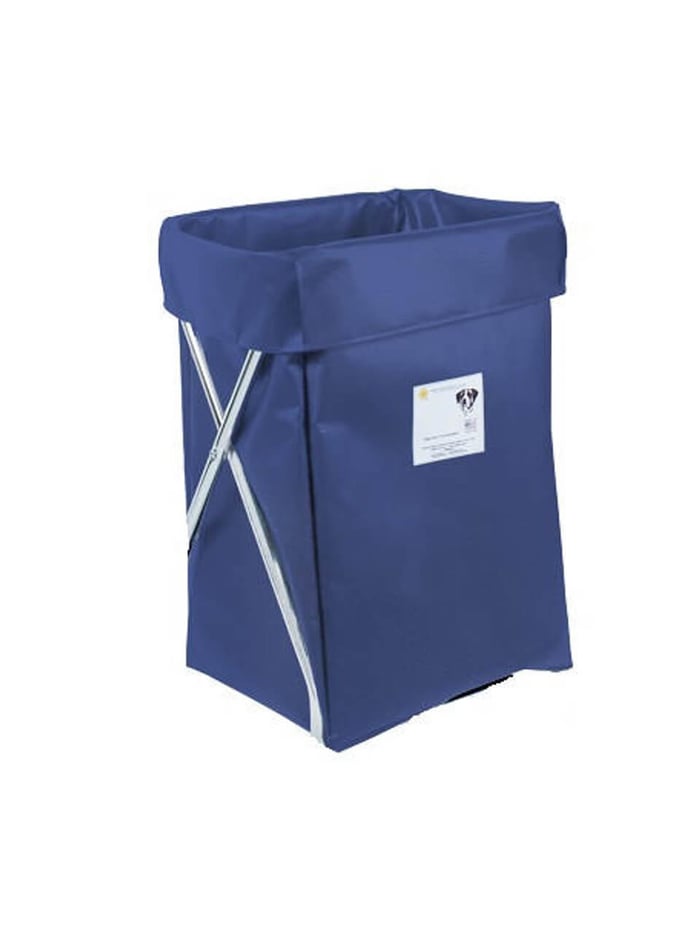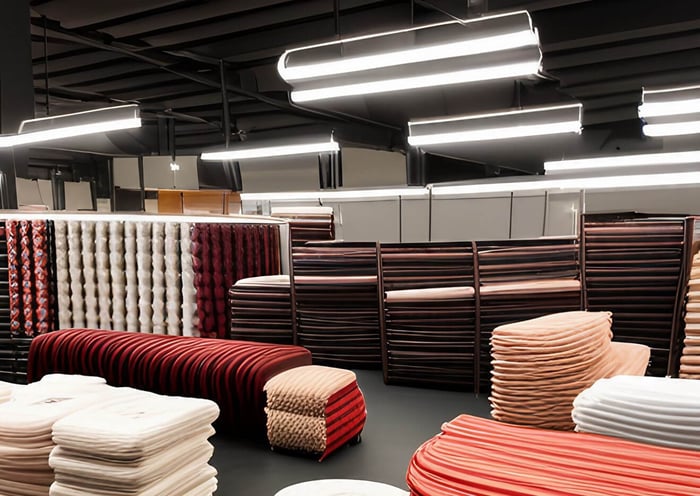A Closer Look at the Supplies Used in Commercial Kitchens
Commercial kitchens use disposable restaurant supplies everyday, for great meals to be created. To keep up with the fast-paced demands of the restaurant world, chefs rely on specific types of cookware that are durable, efficient, and tailored to their needs. In this blog post, we'll explore the pans commonly used in commercial kitchens, the ideal materials for restaurant cookware, and the different types of restaurant supplies Direct Textile Store offers.
Do you work in a restaurant, café, hotel, or hospital? Disposable utensils are one of the most popular item in the foodservice industry as well as other businesses offering meals or snacks. Direct Textile Store offers a variety of disposable utensils, plates, bowls, and clamshell containers in bulk to keep industries stocked with supplies as well as saving people time from washing dishes. In this blog we will explore the different types of disposable restaurant supplies Direct Textile Store has to offer as well as the benefits of them.
What Are Kitchen Disposables?
Kitchen disposables, also known as disposable restaurant supplies, encompass a wide range of single-use items and packaging materials that are used in commercial kitchens and foodservice establishments. These items are designed for one-time use and are typically made from materials like paper, plastic, foam, or aluminum. Common examples of kitchen disposables include:
- Disposable Plates: Often made from sturdy paper or plastic, disposable plates are ideal for serving food at catering events, outdoor gatherings, or fast-food establishments.
- Disposable Utensils: Plastic forks, knives, and spoons are frequently used in restaurants, food trucks, and cafeterias to minimize the need for washing and maintenance.
- Disposable Cups: Whether for hot beverages like coffee or cold drinks, disposable cups are a convenient choice for serving customers on the go.
- Disposable Food Containers: These are commonly used for takeout and delivery orders. They come in various sizes and materials, including foam, paper, and plastic.
- Disposable Napkins: Paper napkins are a staple in many restaurants and are used for wiping hands, cleaning up spills, and enhancing the dining experience.
Why Do People Buy Disposables?
There are several compelling reasons why restaurants and foodservice establishments opt for disposable supplies:
1. Convenience: Disposable restaurant supplies eliminate the need for washing and maintaining reusable items. This streamlines the workflow in busy kitchens and reduces labor costs.
2. Hygiene: Single-use items minimize the risk of cross-contamination. Customers can be assured that their utensils, plates, and cups have not been used by others.
3. Time Efficiency: Disposable supplies save time on dishwashing and cleaning, allowing restaurant staff to focus on food preparation and customer service.
4. Cost-Effective: While the upfront cost of disposables may be higher than investing in reusable items, the long-term savings in labor, water, and detergent expenses can be significant.
5. Eco-Friendly Options: Many disposable supplies today are designed to be eco-friendly and biodegradable, reducing their environmental impact.
Benefits of Disposable Utensils?
There are numerous benefits when it comes to disposable restaurant utensils. Not having to wash dishes saves you time and energy, especially in a fast-past food industry. Disposable utensils are made from materials like plastic, paper, or compostable materials, and offer hygiene and environmental advantages. These utensils are convenient for outdoor events, picnics, restaurants, cafes, business, ice cream shops, or other places where washing silverware isn’t possible or perhaps takes too long. Businesses who serve food for large groups of people typically want something quick and simple, and disposable utensils are just that. These utensils also offer great sanitation, especially if they are wrapped in plastic or paper. Reusable plates, bowls, and utensils may not always get cleaned properly and disposable items ensure a single use, which minimizes the risk of contamination.
Another great benefit of disposable utensils and tableware is that it’s much easier to travel with. Disposable utensils can be trashed or recycled right after use, rather than having to travel back and forth with silverware. They are also much more lightweight and greater for outdoor activities like field trips, sporting events, picnics, or travel.
Disposable restaurant supplies also tend to save people and businesses money in the long run. Because Direct Textile Store offers these in bulk, food services can stock and save. Labor to re-wash silverware can be costly, and having disposable items can save businesses money and time in the long run.
These supplies also prevent overuse of water. Having to wash dishes multiple times a day can rack a water bill up. Conserving water is important, especially in environments where water may be scarce. Disposable items are a water-efficient solution.
Some may fear that plastic disposable utensils are hard on the environment. Direct Textile Store offers eco-friendly alternatives like bamboo, that decompose much faster than plastic.
Overall, disposable utensils offer convenience, hygiene, portability, cost-effectiveness, and safety. While environmental concerns associated with traditional plastic utensils remain, the availability of eco-friendly alternatives presents opportunities to mitigate their impact and make more sustainable choices. Ultimately, the decision to use disposable utensils should consider the specific needs of the situation, balancing convenience with environmental responsibility.
What Kind of Pans Do Commercial Kitchens Use?
Commercial kitchens require a wide array of pans to accommodate various cooking methods and menu items. Here are some of the most commonly used types of pans:
- Fry Pans (Skillets): These versatile pans are used for sautéing, frying, and searing. They come in different sizes to suit the quantity of food being prepared.
- Sauté Pans: Similar to fry pans but with straight sides, sauté pans provide more depth. They are perfect for dishes that require tossing or flipping, such as stir-fries and pasta dishes.
- Sauce Pans: With high, straight sides, sauce pans are ideal for making sauces, gravies, soups, and boiling liquids. They come in various sizes to accommodate different recipes.
- Stock Pots: These large, deep pots are essential for preparing stocks, soups, stews, and pasta dishes in large quantities. They often feature sturdy handles and lids.
- Braising Pans (Braisers): Braising pans are wide and shallow with tight-fitting lids. They excel at slow-cooking tough cuts of meat in flavorful liquids.
- Griddles: Griddles are flat, smooth surfaces used for cooking pancakes, eggs, bacon, and other breakfast items. They can be electric or placed on a range.
- Roasting Pans: These large, rectangular pans with deep sides are designed for roasting meats and poultry in the oven. They often come with a roasting rack.
What Material Should Restaurant Cookware Be Made Of?
The choice of material for restaurant cookware is paramount, as it affects cooking performance, durability, and safety. Here are some of the preferred materials for commercial kitchen pans:
- Stainless Steel: Stainless steel is prized for its durability, resistance to staining, and non-reactive properties. It is excellent for tasks like searing, deglazing, and creating sauces. Look for pans with a thick bottom to ensure even heat distribution.
- Aluminum: Aluminum pans are valued for their superb heat conductivity, making them suitable for dishes requiring precise temperature control. Anodized aluminum pans offer enhanced durability and resistance to sticking.
- Cast Iron: Cast iron pans are known for their exceptional heat retention and even heating. They are perfect for slow-cooking and achieving a good sear. However, they require proper seasoning and care to prevent rust.
- Copper: Copper cookware provides excellent heat conductivity and precise temperature control. It is often lined with stainless steel to prevent reactivity with certain foods.
- Non-Stick Coated: Non-stick pans are coated with materials like PTFE (Teflon) or ceramic. They are convenient for low-fat cooking but may not be suitable for high-heat commercial kitchens.
Bulk disposable cookware, including plates, bowls, utensils, and clamshell containers, is widely used across various settings such as restaurants, catering events, parties, and takeout services. These items offer convenience, cost-effectiveness, and ease of use, making them indispensable in many scenarios. Here’s an in-depth look at the benefits, types, and considerations for bulk disposable cookware.
Benefits of Bulk Disposable Cookware
Disposable cookware eliminates the need for washing and sanitizing, saving significant time and labor. This is especially beneficial in high-volume settings like large events or busy restaurants.
Buying disposable cookware in bulk reduces the per-unit cost, making it a budget-friendly option for businesses and events that require large quantities of serving items.
Single-use items reduce the risk of cross-contamination and foodborne illnesses. They ensure that each customer or guest uses a clean, uncontaminated piece of cookware.
Disposable cookware is available in various materials, sizes, and designs, catering to different types of food and presentation preferences. From elegant events to casual gatherings, there’s a suitable option for every occasion.
Types of Disposable Cookware at Direct Textile Store
- Materials: Paper, plastic, and biodegradable options like palm leaf or bamboo.
- Features: Available in various sizes and shapes, including round, square, and compartmentalized designs.
- Uses: Ideal for serving main courses, appetizers, and desserts.
- Materials: Paper, plastic, and biodegradable materials.
- Features: Available in different capacities, typically from 8 oz to 32 oz, and can be used for soups, salads, and desserts.
- Uses: Perfect for liquid or semi-liquid dishes and snacks.
- Materials: Plastic, wooden, and biodegradable materials.
- Features: Includes forks, knives, spoons, and sporks. Available in heavy-duty versions for tougher foods.
- Uses: Suitable for any meal type, ensuring guests have the necessary tools to enjoy their food.
Disposable Clamshell Containers-
- Materials: Foam, plastic, and biodegradable options like molded fiber.
- Features: Hinged lids for secure closure, various compartment options to keep food separated.
- Uses: Ideal for takeout and delivery services, keeping food fresh and intact during transportation.
Direct Textile Store offers a variety of commercial cookware and bakeware in bulk including aluminum trays, aluminum foil, disposable plates, bowls, utensils, clamshell containers, and much more.
Direct Textile Store offers commercial cookware that is made to be in busy restaurants and cafes, while meeting the requirements of professional kitchens. Our products are a top choice for people who take their cooking seriously because they are useful and durable.
Commercial kitchens rely on a range of bulk restaurant supplies to meet the demands of their diverse menus and cooking methods. The material of choice for restaurant cookware includes stainless steel, aluminum, cast iron, copper, and non-stick coatings, each with its unique advantages.
If you need assistance, contact Direct Textile Store Customer Service at 800-615-5822
About the Author
Haley Bridges, Marketing Assistant at Direct Textile Store
Haley Bridges has served as Marketing Assistant at Direct Textile Store, where she specializes in hospitality linens, uniforms, and bulk textile solutions. She works closely with hotels, restaurants, and healthcare facilities to match them with durable, high-quality products that balance both performance and value. Haley's expertise in textile sourcing and merchandising strategy helps businesses make confident purchasing decisions while staying ahead of industry trends.



